Long gone are the days of straining your neck to check your rear view as you drive in reverse. Backup cameras, which were made mandatory in cars in 2018, attach to the rear of your vehicle (ideally as close to the center of the car as possible) and send the footage to a monitor attached to your dashboard, a console display, or an in-set screen on your rearview mirror, giving you better visibility than ever before with none of the neck strain.
Some backup cameras have a sensor that produces a beeping sound when your car gets close to another object. Most will at least have a grid of lines that appears on the screen to provide context for how close you are to objects in view. Some backup cameras give you a simple rear view, while others use a series of cameras to simulate a bird's-eye view of your car and its surroundings.
Just because you have a rearview camera, though, doesn't mean you're stuck with it. You can always upgrade -- you might even be able to add additional cameras to an existing system if you've got the technical know-how to wire it properly or know someone who does. On that note, if you drive an older vehicle that doesn't have a reversing camera, it's a good idea to have one installed. Either way, you'll find yourself asking the same question: What do I need in a backup camera?
Here are our picks for the best aftermarket backup camera in a variety of categories, based on expert opinions and consumer ratings. And be sure to continue reading on afterwards for some pro tips on picking the right rear camera system for you.
If you want easy installation and great picture quality, the AUTO-VOX CS-2 offers the best of both worlds. As it's a wireless camera, you should have no problem attaching the camera (with build-in wireless transmitter) to the back of your car, or mounting the suction-cup enabled screen to your dashboard. That means you can save money by avoiding installation fees with this wireless system.
While wired cameras are more reliable than wireless ones on the whole, the CS-2 -- like the other wireless cameras we've included here -- is an exception to that rule. The camera uses digital wireless transmission (as opposed to analog), which means that there's virtually no interference from other signals and no distortion to the image. Plus, the signal is strong, with AUTO-VOX recommending the camera for any vehicle less than 32 feet long.
It should be noted that the viewing angle for the CS-2 rearview backup camera is 110 degrees, which may be too narrow for drivers who want a very wide field of vision. However, for parallel and close-quarters parking, 110 degrees works well, as it cuts down on the amount of image distortion created on the screen.
At $120, the AUTO-VOX CS-2 is pricier than some other car backup camera systems, but the high performance and reliability ensures that customers are satisfied with the purchase.
If your car doesn't have a rearview camera and you're looking for a less-expensive alternative, it's hard to beat the eRapta ERT01. This camera easily attaches to a car's license plate and includes a 26-foot RCA cable that can connect to a screen with a compatible output. While there's no screen included with the camera, many vehicles already have mounted screen displays that will work with the ERT01 -- just make sure to check yours first, or you may end up needing to buy a separate screen.
As a wired camera, the ERT01 will be more difficult to install than the average wireless camera -- but only slightly. User reviews on Amazon cite the ease of setting the camera up, with only the single RCA cable necessary to connect the camera to the screen. The kit also includes a cable to power the camera.
The entire package only costs $26, but that's not the only reason why the ERT01 is Amazon's top-selling backup camera. In addition to being easy to use, it's a durable waterproof camera, operates at a temperature range of -50 to 80 degrees Celsius and has a 149-degree field of vision. All in all, it's a reliable product offered at an affordable price.
Unless you're a professional truck driver, an RV is -- by far -- larger than any other vehicle you'll ever drive. In that case, it makes sense to spend more and make sure that you, your passengers, and the people around you are safe.
Rear View Safety's 4 Camera Setup with Quad View Display allows RV drivers to get the most complete view of their surroundings -- and they can take everything in all at once. There are four cameras in total: two to be mounted on the rear of the RV (with 130-degree viewing angles) and one for either side (with 120-degree viewing angles). The split-screen monitor can show feeds from all of the cameras at once, or just the feeds the driver chooses to see.
In addition to transmitting video, this RV backup camera system also transmits audio, so even if you've got the air conditioner blasting or some music playing, you'll be aware of the sights and sounds of the road. Plus, the fact that this is a wired camera system ensures the integrity of the transmission -- and while you may need professional help to install this rearview camera, some Amazon reviewers reported that they were able to do it themselves without too much trouble.
Whether you have a backup camera or not, odds are that you're used to looking at your rearview mirror periodically. Not only were many of us initially taught to incorporate the mirror while backing up, but unless you have a display with the specific capability, it's the only way to see what's going on behind you while you're driving forward.
Toguard's Backup Camera combines that natural inclination with the high-tech features of today's driving experience by way of a display that replaces your rearview mirror and provides a similar -- but superior -- view. The display functions as a touchscreen and has picture-in-picture capabilities to show a feed provided by the included dash cam. All footage can be recorded and played back.
And if you're not in the mood for all that fancy stuff? You can just tap the power button on the screen and it will function exactly like a regular rearview mirror. Even when the screen is in "mirror mode," both cameras will still be on and recording in case there's any footage you need to review.
We've already seen that eRapta makes the best backup camera for drivers on a budget, so it's no surprise that they also make a relatively inexpensive model that works well for larger vehicles. That model, the eRapta Backup Camera 2.0, is a great choice for making truck driving a bit safer and easier.
Like the Rear View Safety system, the Backup Camera 2.0 has four different cameras meant to be mounted on the rear and sides of a vehicle. The 7-inch split screen can display one, two or four camera feeds at once, providing a near-complete view of your surroundings.
The eRapta Backup Camera 2.0 is a wired model, and with four separate cameras, there's potentially a lot of wiring involved. While you always have the option to seek professional installation, eRapta markets the model as being easy to install. Like with many of the other wired camera models on this list, that claim of ease is bolstered by user reviews on Amazon.
When it comes to finding a backup camera for an SUV, you want something that can give you the precision of a car camera and the coverage range of a truck camera. You also want to keep installation easy, because with a larger vehicle, putting in the wrong wired camera can turn into a huge (or expensive) job.
The Zeroxclub W01 Digital Wireless Backup Camera Kit covers all of those bases. Being as it's a wireless camera, installation is a breeze, with the included monitor plugging into your vehicle's lighter plug, if you have one. The signal is also strong, with Zeroxclub touting "100% no interference" and a transmission that works while driving at speeds of up to 85 miles per hour.
The included LCD screen is 7 inches, with a 1280x720 resolution that offers the driver a clear look at what's going on behind their vehicle. The camera itself is waterproof, with infrared lights, a high-definition image processor, and a 149-degree field of vision. All of these features combine to ensure that the Zeroxclub camera is both accurate and durable, which is important in a product no matter what vehicle you drive.
Attaching a trailer to your car presents a few difficulties when it comes to driving and visibility accommodations. First of all, you're driving a vehicle that's suddenly much larger than it usually is, which means that you won't have the level of familiarity or comfort that you would if you drove an RV or truck. Secondly, you can't use a wired backup camera, as it would require a permanent connection between the trailer and your vehicle's dashboard.
Yakry's HD 720P Digital Wireless Backup Camera is an ideal choice, considering these limitations. The wireless camera signal is strong, with Yakry recommending it be used on vehicles up to 45-feet long -- a range which covers a wide variety of trailers. The model also offers the ease of installation that drivers demand in a wireless camera model.
Of course, it's the view that's most important when it comes to driving safely. Not only is the signal strong, but the camera is fog resistant and the 150-degree viewing angle provides a wide range of vision on the included 5-inch monitor. The camera can also be set to run constantly, but again, be aware of the hazards of using a backup camera in such a fashion.
When it comes to versatility and ease of installation and use, few cameras come close to the DoHonest HD 1080P Digital Wireless Backup Camera. That, combined with the wide 150-degree viewing angle makes it an ideal choice for a larger vehicle, such as a van.
The DoHonest camera fits easily on a vehicle's license plate holder, and it's got an internal transmitter, eliminating the need for any extra devices. The camera is waterproof, and the six-lens glass construction faithfully reproduces color in footage. The night-vision capabilities are highly praised in Amazon's customer reviews.
The screen -- which is connected to the camera by a digital signal capable of reaching up to 100 feet -- projects an HD 1080P image, and can be attached to your dashboard or your windshield. Overall, the DoHonest model is one of the most user-friendly backup cameras available, and considering its reasonable price tag, it's not hard to see why it's one of the most popular.
When it comes to putting a backup camera in an older car, the largest stumbling block is the potential lack of a console screen. While many camera kits come with screens of their own, there are drivers who prefer to use a single console-mounted screen for all of their display needs. If your car was built before a certain point, you may not have that option unless you're prepared to break the bank and get one installed.
LeeKooLuu's 1080P Digital Wireless Backup Camera is an easy-to-use model with a customizable 5-inch display that ensures any driver's comfort -- and while it may not be mounted in your dashboard, it's the next best thing. Qualities like brightness, color saturation and contrast can be altered, while the driver also has the option of switching between a mirrored or facing view. That makes it possible to use on the front license plate, if necessary (but remember, there's no substitute for looking at the road).
The LeeKooLuu backup camera itself is mounted in a license plate holder, so it's easy to install. It's also waterproof, has a 150-degree viewing angle and has eight infrared LED lights for night driving. All things considered, it's an excellent upgrade if you want to make your older vehicle a little bit easier to maneuver in reverse.
Comparison of best backup cameras
| Make | Model | Type | Cost | |
| Best backup camera overall | AUTO-VOX | CS-2 | Wireless | $120 |
| Best backup camera on a budget | eRapta | ERT01 | Wired | $26 |
| Best backup camera for RVs and campers | Rear View Safety | RVS-062710 | Wired | $708 |
| Best backup camera for cars | TOGUARD | Mirror Backup Camera | Wired | $60 |
| Best backup camera for trucks | eRapta | ER0202 | Wired | $200 |
| Best backup camera for SUVs | ZEROXCLUB | W01 | Wireless | $180 |
| Best backup camera for trailers | Yakry | Digital Wireless Backup Camera | Wireless | $100 |
| Best backup camera for vans | DoHonest | 8523723024 | Wireless | $110 |
| Best backup camera for older cars | LeeKooLuu | 8523722953 | Wireless | $110 |
Backup cameras are required by law now in all new vehicles, but owners of older cars can get one by looking to the aftermarket.
Jon Wong/RoadshowWhat to look for in a backup camera
For starters, there are three main categories to consider: wired backup cameras, wireless backup cameras and smartphone backup cameras. Wired cameras are hooked to output screens with wires, which means the connection is stronger, but professional installation may be required.
Wireless cameras are easy to install since there are no wires or cables connecting the camera to the monitor (there may still be cables connecting them to power sources), but the connection may be spotty, especially in bad weather. If you have continued problems with your screen capturing images from the camera, you'll need to talk to a professional (and potentially even switch to a wired camera). Don't be discouraged, though -- any kind of camera can likely be fixed. "Take it to [a service center] to figure out what's wrong with it," advises Zoriy Birenboym, CEO of eAutoLease.com. Birenboym spent over 15 years in the auto industry as a salesman before founding the online auto leasing company. "It should be an easy fix if nothing is wrong with the wires."
Smartphone cameras are wireless and use smartphones as displays, making them easier to use but also introducing even more potential connection issues. You also might want to consider your phone's screen size. "Make sure the screen is large enough for you to get a clear view," says Harry Anapliotis, marketing director and full stack developer at Rental Center Crete, a rental car agency that's been serving the Greek island for over 45 years. "Its sole purpose is to show you what's behind you, and it's no good if you're squinting to see the screen."
For under $30, the eRapta ERT01 is an affordable backup camera solution for vehicles that already have a compatible screen.
eRaptaThere are also features available in certain backup cameras that might be important to you, and variations among different cameras. For instance, different cameras have different fields of view, which determine how wide of an angle you can see behind you. Typically, angles around 165 to 170 degrees are the maximum, while angles under 120 degrees are considered by some to be too narrow. The larger the angle, though, the more distorted the image will be on your screen.
Some cameras also provide night vision to help you see in darkness, but there's an efficacy difference between military-grade night vision and standard night vision. The latter often simply means that one or more infrared lights have been added to the camera. Finally, as mentioned earlier, you can have the footage recorded by the camera sent either to a screen in your console, a mounted screen, or an inset in your rearview mirror. You can pick whichever you prefer, but a dashboard or mounted screen will offer a larger image.
You also might need to moderate your hunt based on your vehicle. You can add a rear camera to just about any vehicle, but the details may change. For instance, many RV owners are particularly interested in backup cameras due to the difficulty that comes with maneuvering such large vehicles in reverse, but they may have to adjust their expectations in terms of cost and capability.
For the best image quality, installing a wired backup camera system like this RVS-062710 on larger vehicles is recommended.
Rear View SafetyLike with cars, RV cameras come in wired, wireless and smartphone varieties, but the connection between the cameras and screens in wireless models may be particularly unreliable in large vehicles, as the distance between them is increased. Likewise, a wired camera may cost more to install than it would in a car because of the size of the vehicle. RV cameras should also be mounted higher than they would be on a regular car, with nine feet off the ground considered ideal.
In some ways, though, all cameras are the same. For instance, the quality of the view and the picture depends on your connection, and some brands have a reputation for higher performance than others do. For car backup cameras, popular brands include Auto-Vox, Yada and LeeKooLuu. When it comes to RV cameras, some of the brands frequently cited as the best include Rear View Safety, 4Ucam and Furrion.
Finally, it's important to remember that backup cameras come with their own rules. While they make driving in reverse easier and safer, they still can't provide complete, 360-degree visibility (no matter what they claim), so it's crucial to use your mirrors and remain attentive while you drive. There are also ways to wire your camera so that it's on all the time, including when you're driving forward -- but is it worth it? You'll get a better view of what's going on behind your car, but it may also present a distraction while you drive, rather than help your view as it does when going in reverse.
The TOGUARD system features both a backup and forward-facing dash camera.
TOGUARDWhat to expect to spend on -- and get from -- a backup camera
Price is a major concern when selecting a backup camera, and prices can vary widely. Based on a number of factors, such as the type and brand of camera and whether or not you already have a dashboard screen, they can range from $10 to $500, or even more for larger vehicles. The cost simply depends on the equipment you need and the equipment you already have. This is evident in the way cameras for sale are typically grouped -- they're sold as camera units that hook to existing screens, individual components, and all-in-one systems.
Installation is another concern. If you plan to install your camera on your own, make sure to set aside 3 hours for the job. If you need professional installation, that can set you back an additional $400 to $600. Before you make your decision, it's important to remember that the most reliable backup wired cameras are also the most difficult to install. That said, the money and hard work can be worth it -- if you get the right backup camera, install it properly, and take care of it, it can provide you with 10 years of safer driving. "It might get outdated and not have all the best features," says Birenboym, "but it should have enough life to last that long."
"People report backup cameras lasting anywhere between a month to 10 years, which tells us that what we really need when looking for a backup camera is something that is sturdy, and something that comes with a warranty (just in case)!" says Michael Lowe, CEO of Car Passionate. "The hope is that the camera will last as long as you own the car, but cars are sturdy, and cameras not as much. So when you are buying, it's worth considering whether [the camera] comes in a protective case that can help protect against mishaps or falls. Aside from all the snazzy features, what you want is a product that does what it says on the tin and can last the distance."
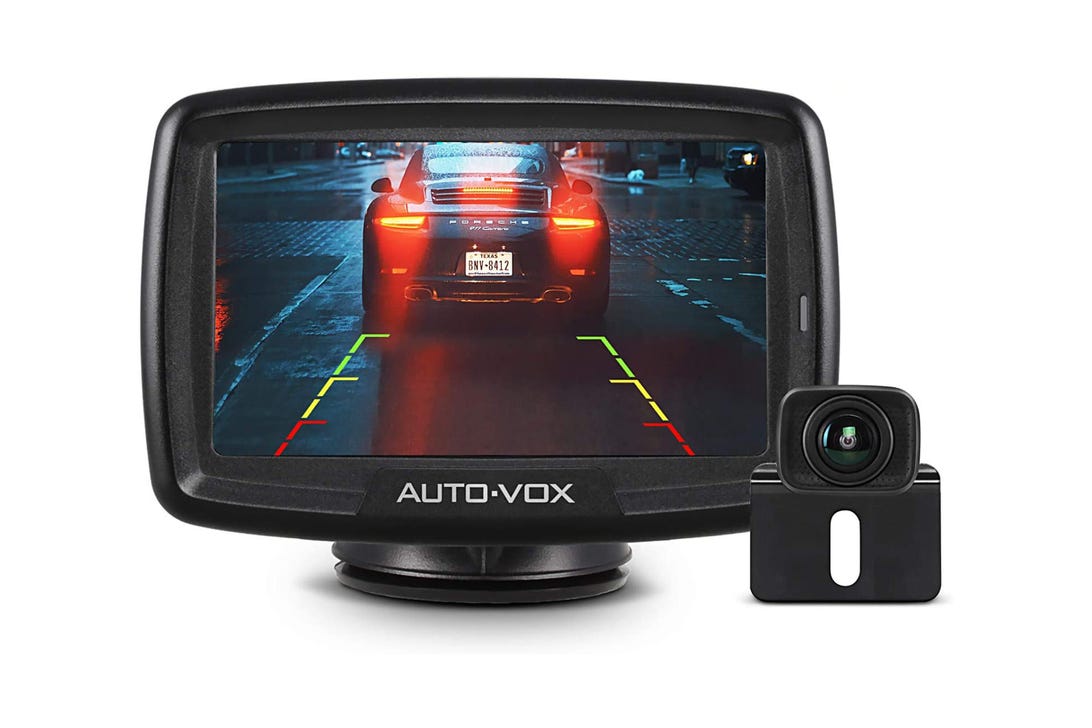
The AUTO-VOX CS-2 backup camera system comes with a 4.3-inch monitor.
AUTO-VOXIf you've decided you want to install your camera yourself but you're intimidated by the prospect of the job, you should consider a license plate backup camera. Some of these wireless backup camera systems are mounted in license plate holders, while others can easily be attached to your existing holder. You'll need to have a screen as well, whether it's an existing one in your dashboard or a mounted monitor. Some of the most well-regarded license plate backup camera brands are LeeKooLuu and Esky.
A backup camera can be a large expense or a minor one, but possessing the necessary knowledge will help you make a fitting investment. In the end, what's most important is that you'll be driving more safely.
What you need to know before getting a backup camera
- Does your car already have a screen in the dashboard? If it does, you may be able to use it to broadcast the camera's footage. But if it doesn't, you'll need to have someone install a mounting bracket for an LCD monitor or use a different viewing option.
- Do you want a wired, wireless or smartphone camera system? Weigh the pluses and minuses of each type of camera and measure them against your personal needs and preferences before making a decision.
- Are there special concerns related to adding a backup camera to your vehicle? Depending on the size and shape of your vehicle, you may need to mount the camera in a different place, or you may find that a certain brand or model is better suited for the job.
- How much are you willing to spend? Backup cameras vary greatly when it comes to price, so it's better to have a budget in mind before you start shopping. You must also allow an additional cost for installation, if you don't want to install the rearview backup camera yourself.
- Which model best suits your needs? Once you've answered all the other questions, you'll be able to consult resources (such as this list) to find which backup camera is the best choice for you.
Written for Roadshow by Scott Fried.
from CNET https://ift.tt/35xUFIW
via IFTTT



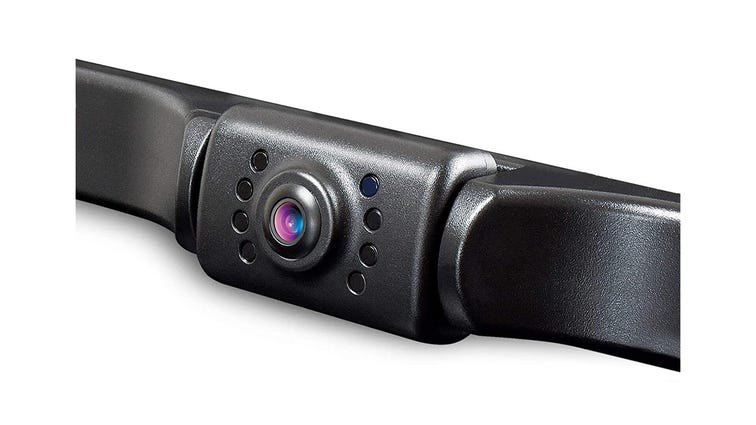
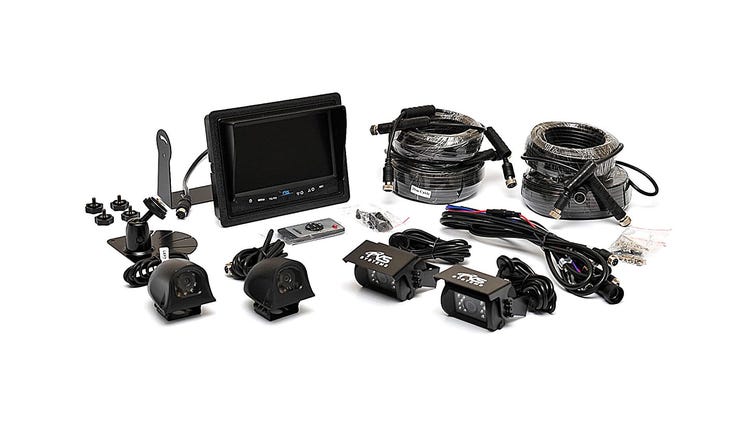
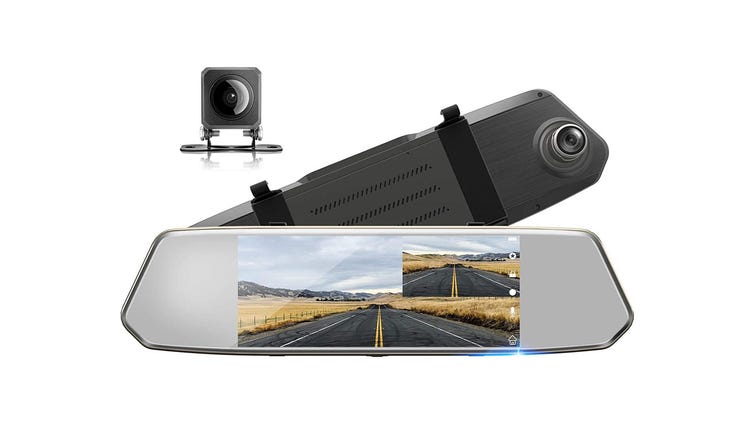
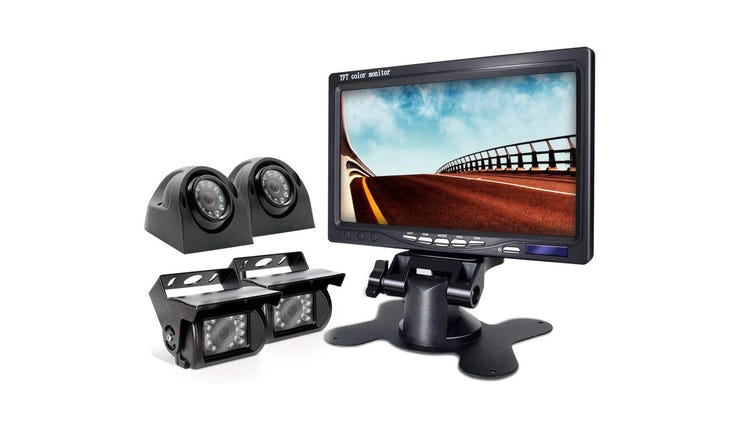
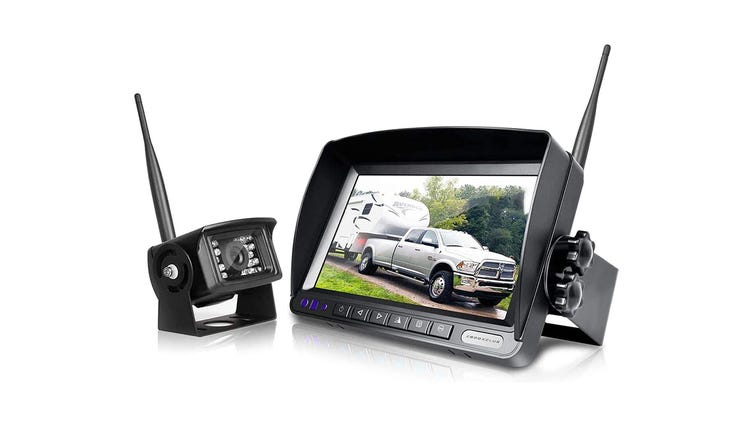
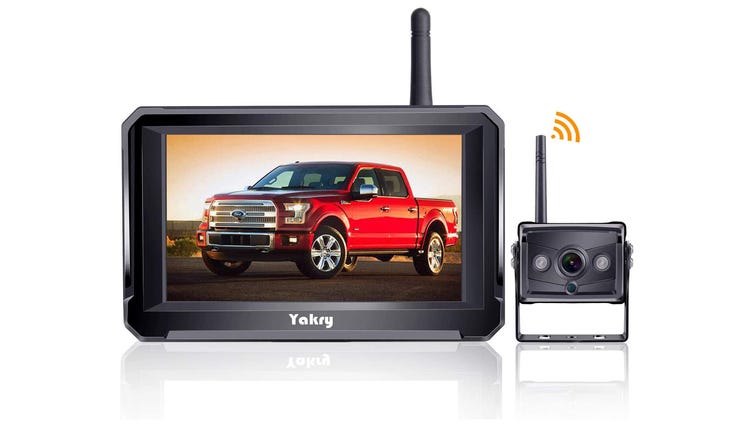
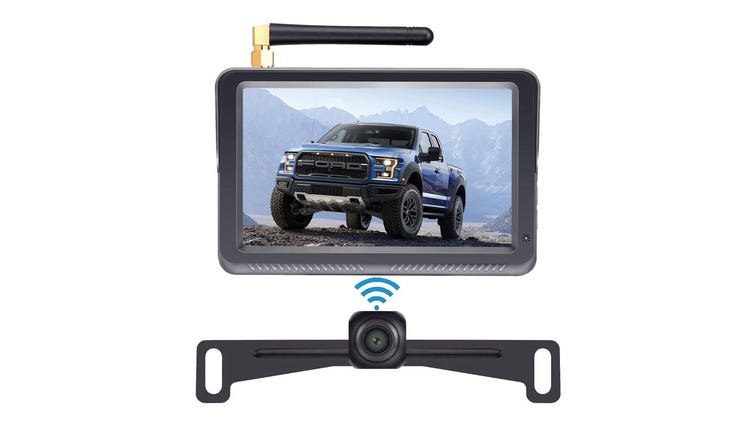
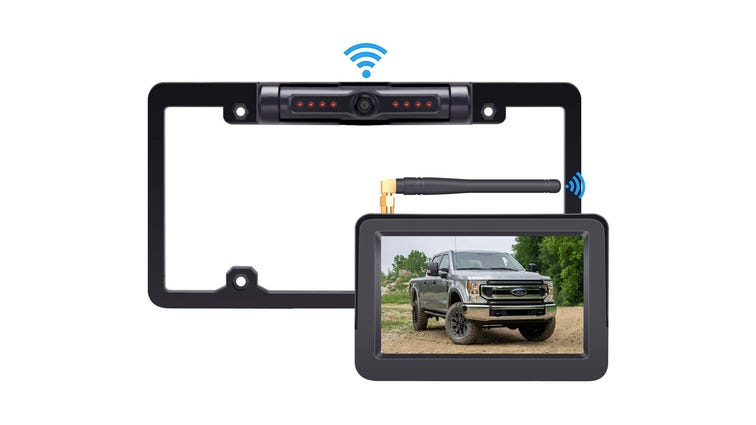

No comments:
Post a Comment